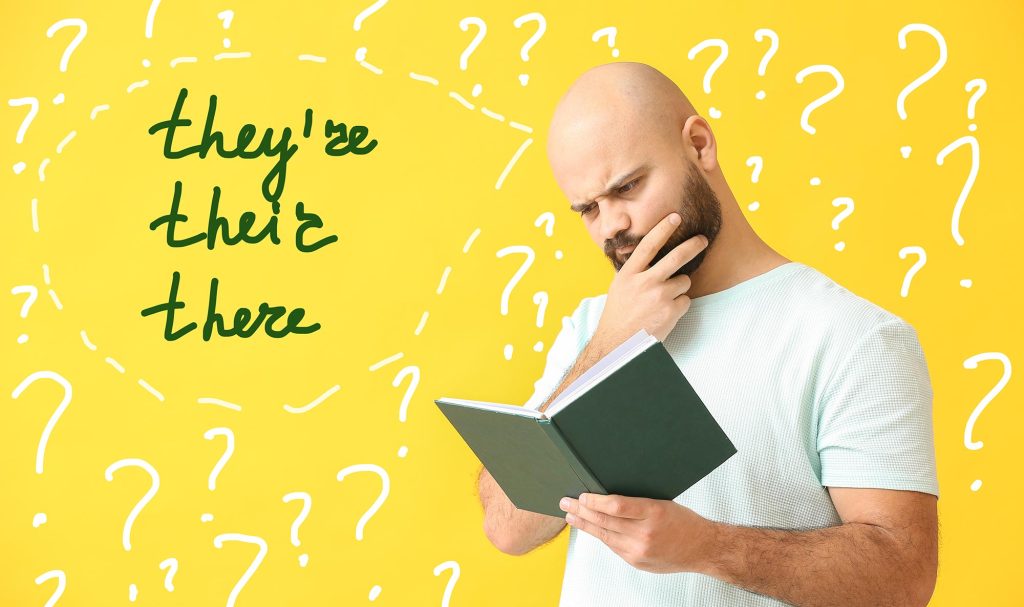- Navigator
- Marketing and Communications
 English grammar and punctuation rules are not set in stone. As the years go by, they change and evolve along with the language itself. This is a good thing, in my opinion.
English grammar and punctuation rules are not set in stone. As the years go by, they change and evolve along with the language itself. This is a good thing, in my opinion.
However, that doesn’t mean there is no value in learning the current rules and using them correctly in the meantime. The problem is that after we leave school, we almost immediately start forgetting what we learned unless we write, edit, or teach English professionally.
Often this grammar amnesia is slight (needing to refresh your memory about the words that don’t follow the “i before e” rule, for example), but sometimes it is surprisingly severe and widespread.
So, I’m offering this short refresher on the top six English grammar and punctuation rules I see ignored or misused most often:
1. Don’t use an apostrophe to make something plural
Whether it’s an ad for a DJ spinning new wave hits from the 1980’s; a cute sign on the front of your neighbor’s house that reads: The Schmidt’s; or the sign at the grocery store that offers “Avocado’s” for $1.50 per pound, all of them are using apostrophes incorrectly.
Apostrophes are only used for two things:
- To indicate possession: The Schmidts’ house was beautiful. (The house belongs to the Schmidts.)
- When making a contraction (aren’t, isn’t, they’re, I’m, etc.)
That’s it. The ONLY exception to this is with single lowercase letters used in a sentence, like “Don’t forget to cross your t’s and dot your i’s.” To be clear, the apostrophes in this exception don’t make these letters plural (the “s” does that). They just make the sentence easier to read and understand.
2. Stop using single quotation marks instead of double quotation marks
There’s a reason why we use two fingers on each hand, not one, when we do air quotes. Single quotation marks are only used for two things:
- Putting a direct quote or the title of a short work in an article headline or blog title
- Putting a direct quote or the title of a short work inside another direct quote
3. Assure, ensure, and insure are not interchangeable
Insure should only be used when referring to insurance policies and coverage (auto insurance, home insurance, life insurance, etc.). That is easy to remember since they both start with “in.”
Assure and ensure are a little more difficult because their meanings are somewhat similar. One way to tell the difference is to remember that assure (and reassure) is used when referring to people or animals and ensure is used when referring to things or actions.
4. Use “e.g.” when you’re listing examples, not “i.e.”
E.g. is an abbreviation of “exempli gratia,” which means “for example” and is used to introduce one or more examples.
Healthy exercise (e.g., riding a bike, jogging, hiking, etc.) will help you live longer.
I.e. is an abbreviation of “id est,” which means “that is,” “in other words,” or “in essence” and is used to provide clarification.
I am a pescatarian (i.e., I’m a vegetarian, but I also eat fish).
To avoid using the wrong abbreviation, I simply remember that e.g. starts with the same first letter as “example(s)” and i.e. starts with the same first letter as “in other words.”
5. Hyphens, en dashes, and em dashes are not interchangeable (with one exception)
A hyphen (-) is used to join words or parts of words together (long-term, editor-in-chief, trans-Atlantic, etc.). It can also be used instead of an en dash in ranges of numbers. It should never be used to set off separate clauses or phrases within a sentence (that’s what an em dash is for).
An en dash (–) is longer than a hyphen but shorter than an em dash. It is used to show ranges of numbers, including dollar amounts, years, times, page numbers, etc. It should never be used to set off separate clauses or phrases within a sentence. It is primarily used in formal publications and can be replaced by a hyphen if preferred. Just remember to be consistent in what you use!
The community meeting was scheduled from 4:30–7 p.m.
New hires earn $21.50–$25 per hour.
An em dash (—) is stronger than a comma but weaker than a period or semicolon. They are used to indicate a pause in a sentence, to set off a separate clause, word, or phrase within a sentence, to add emphasis or amplify an idea, or to set off the source of a direct quotation.
Dark, leafy greens — such as spinach, kale, and chard — are an important part of a healthy diet.
I opened the door, and there she stood — my long-lost sister.
“Try not to become a man of success, but rather try to become a man of value.” — Albert Einstein
6. Get those homophones straight
Homophones are words that sound the same but have different meanings, such as “their, there, they’re,” “too, to, and two,” and “its and it’s,” and their misuse has really taken off in the last decade.
To avoid using the wrong word, the writer must first understand the difference between each word and when to use them.
To help eliminate these types of common mistakes from your writing, I highly recommend downloading and using Grammarly.com’s free automated writing assistant plug-in for your computer or web browser. It will highlight basic grammar and punctuation errors as you write and show you how to correct them.
It is occasionally glitchy and doesn’t work on all applications and software programs, but it is the closest thing to having your own built-in copyeditor and it’s free, which totally makes it worth it.
If you want to take it a step further, check out Grammarly Business for teams.




